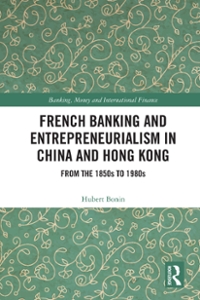Question
(22 marks total) Consider the following modification of the endogenous interest-rate spread model from Section 2.1 of LN6. Suppose that, rather than there only being
(22 marks total) Consider the following modification of the endogenous interest-rate spread
model from Section 2.1 of LN6. Suppose that, rather than there only being two possible
income realizations in the second period (i.e., y2 and 0), there are three: y2 = yH with
probability pH, y2 = yL with probability pL, and y2 = 0 with probability p0 = 1 pH pL,
where yH > yL > 0. All other elements of the model are the same as in LN6, including the
fact that the HH is required to repay as much of the loan in the second period as it feasibly can.
(a) (6 marks) For a given interest rate rB, let GH(Q) denote the amount the HH would
actually repay the bank at t = 2 for an initial loan size Q 0, assuming their secondperiod
income was yH. Similarly, let GL(Q), and G0(Q) denote the actual repayment
amounts assuming the HH's second-period income was yL and 0, respectively. Write down mathematical expressions for GH(Q), GL(Q), and G0(Q). Draw these three functions on the same graph (one with Q on the horizontal axis), being sure to carefully label any important points on the axes.
(b) (8 marks) Assume henceforth that the HH faces the "optimistic" NBL = yH/(1+rB),
i.e., the HH cannot borrow more than it could feasibly repay if it were to end up in the
"high" income state yH in the second period. Given the interest rate rS that the bank
must pay on deposits, for a loan of size Q > 0 let rB(Q) denote the interest rate at which
the bank's expected profit at t = 2 is exactly zero. Obtain a mathematical expression
for the function rB(Q) (NOTE: We're not solving for the spread here, just the interest
rate on loans itself). (HINT: You may find it useful to separately consider a number of
different ranges of Q.)
(c) (5 marks) In your answer to (a), you should have found that one or more of your functions
has a "kink" (a sudden change in the slope) at one or more values of Q. Importantly, the
value(s) of Q at which there is a kink should depend on the relevant interest rate rB(Q)
that's in effect at that value. Using your answer to (b), for each kink, solve explicitly for
the value rB(Q) at that kink, and then use the result to determine explicitly the value
of Q at the kink as a function of exogenous parameters only. (HINT: For each kink, you should have an expression for Q at that kink that depends on rB. Replace rB with rB(Q)
in that expression, then substitute it into the function rB(Q) you found in (b). Finally,
solve for rB(Q), and then plug the result into your original expression for Q to get the
value of Q at the kink.)
(d) (3 marks) Given your answers to (b) and (c), draw the function r(Q) in a graph with Q
on the horizontal axis, being sure to label all important points (including, among things,
any kink values) on the axes.
Step by Step Solution
There are 3 Steps involved in it
Step: 1

Get Instant Access to Expert-Tailored Solutions
See step-by-step solutions with expert insights and AI powered tools for academic success
Step: 2

Step: 3

Ace Your Homework with AI
Get the answers you need in no time with our AI-driven, step-by-step assistance
Get Started


